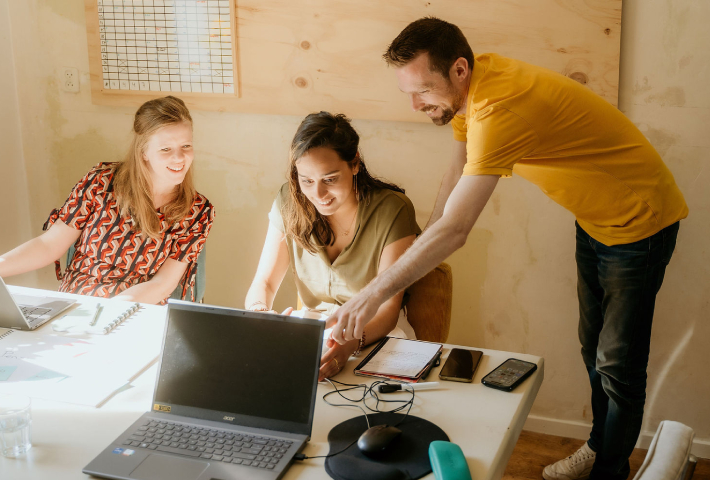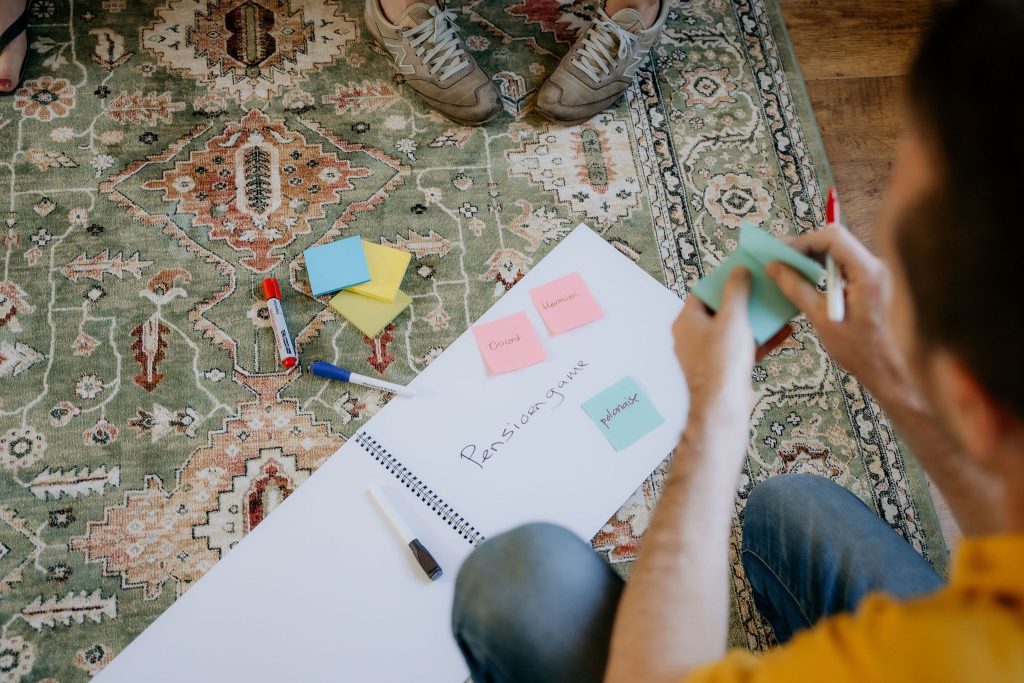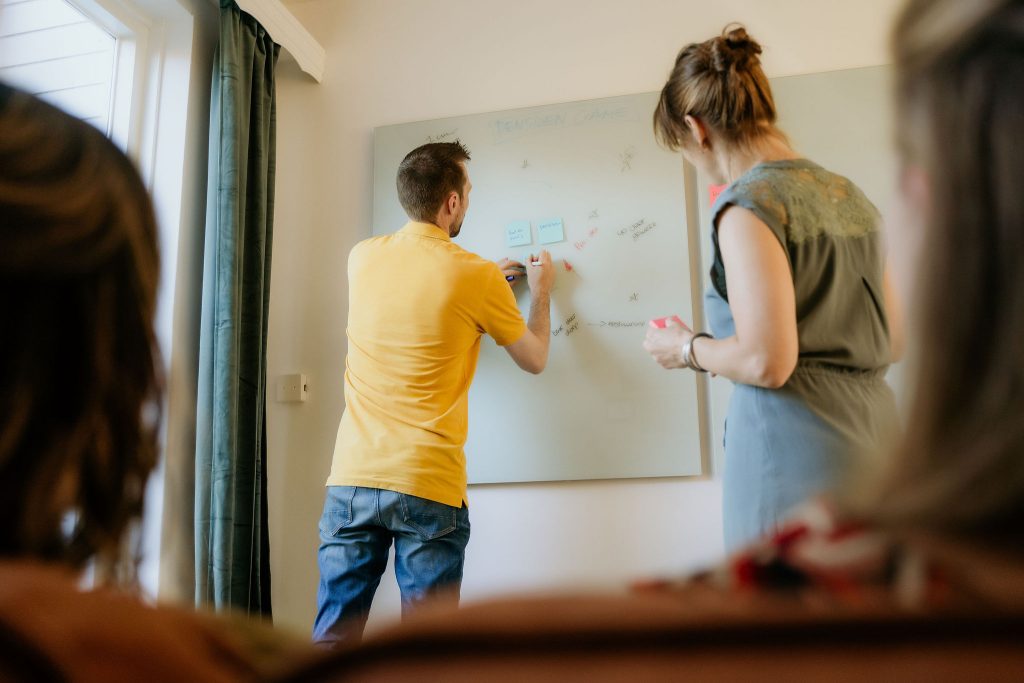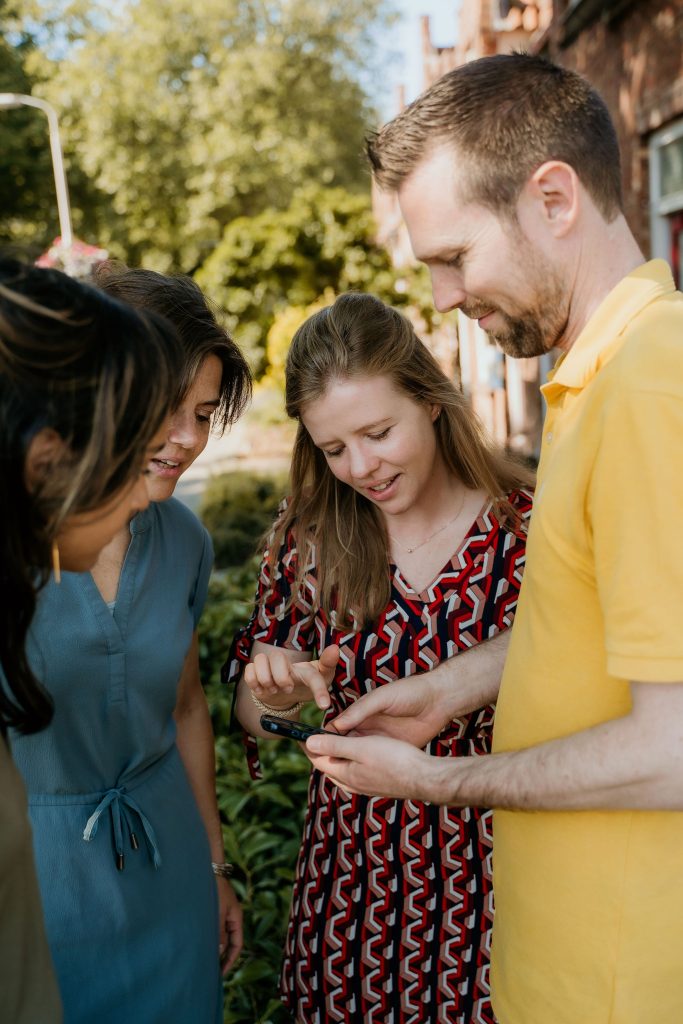
Coaching for dropouts
We offer creative dropouts a paid employment contract of 10 months within our game creation process. We adapt the process in such a way that it not only leads to the creation of a commercially valuable product, but also offers a lot of space for participants to learn new skills.
While working, we guide the young people to explore what the best next step is for them, so that they can take that step after the project.
Substantive coaching: new skills
We carry out the game development process below, together with the creative drop-outs, under the guidance of a Game developer, Scummaster and Youth worker. We work on a project basis for the period from September to June. Within the project we offer various jobs for creative drop-outs for 2 days a week. Participants are offered a temporary contract for 10 months and are paid a salary during this period.

Design Thinking Phase (September – December)
The participants go through the Design Thinking phase to develop a prototype of a game that can be used as a team outing.
September: Introduction and Empathize phase
Introduction to Design Thinking and conducting customer interviews.
Result: Insights into customer needs.
October: Define Ideate phase
Define problem statement, brainstorm ideas, select the best idea and work it out in a concept.
Result: Formulated problem statement and a detailed game concept.
November: Prototyping phase
Prototyping workshop, building prototype and internal testing.
Result: Game Prototype
December: Prototype improvements
Improvement rounds, internal testing with friends and family.
Result: Completed prototype

Scrum Phase (January – June)
The participants use the scrum method to convert the prototype into a commercial game. They work in sprints of 2 weeks. In this elaboration, we assume that the game is a new location-based game, like the one we offer now.
January: Start scrum and first sprints
Sprint planning, build basic functionalities
Result: A first workable version of the app with basic functions
February: Further development and internal testing
Build more complex functionalities, internal testing and processing feedback.
Result: Game that is ready for external testing
March: External testing and optimization
Test days with companies + workshop on marketing.
Result: A market-ready version of the app and the game
April: Introduction to the market
Game launch, including a demo for interviewed companies from phase 1
Result: Successful market introduction and growing interest in the team outing
May: Evaluation and optimization
Evaluation and bug fixing
Result: Documented and evaluated game
June: Completion and transfer
Final presentation for friends, family and companies.
Result: Festive closing
Personal guidance: more confidence and self-insight

September – October
We start by playing our own team building games. All young people set personal goals and complete a zero measurement for the impact measurement. We also focus on communication and cooperation within the team.
Result: A familiar group atmosphere with positive group dynamics and clear insight into individual goals.
November – December
We focus on the role of all young people within the team. They try out different roles and discover what they are enthusiastic about.
Result: Young people know what they are enthusiastic about and will delve into this for the rest of the trajectory.
January – March
Now that we are well underway, we focus on discovering our own qualities and pitfalls. While working, we reflect on young people, compliment them and learn from the mistakes that are made.
Result: Young people learn to recognize their own qualities and pitfalls.
April – May
The end is almost in sight. We encourage young people to develop their own vision about the next step they want to take. Young people present their next steps to each other and we think along about how we can make them concrete. Think of creating a CV or registering for a follow-up study.
Young people are responsible for the next steps themselves, but we think along and help where possible with establishing contacts with, for example, a reintegration coach, an employment agency, the Chamber of Commerce, a training coordinator, etc.
Result: Young people have a clear idea of what their next step is and
take action in this.
June
Closing with friends and family: we celebrate the success together or learn from our mistakes. We put the young people in the spotlight anyway. We ask the
young people to do an impact measurement at the end.
Result: Young people get a positive boost, have a new perspective and a concrete plan for a next step. This could be:
- Entering a job at Breakout Bandits
- Following the game creation trajectory again, but from a more managerial role
- Working at another company
- Following a training course
- Starting their own business
As long as it is the next step in their lives.
Experience
We have extensive experience in guiding young people.
